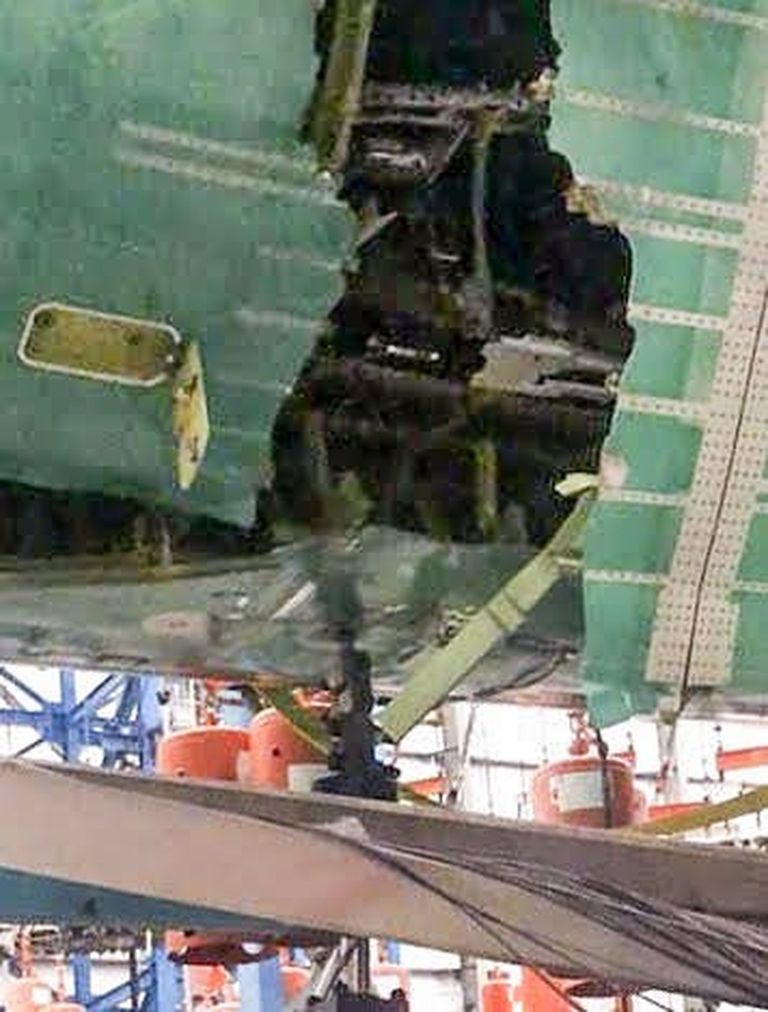 par Beochien Mer 27 Nov 2019 - 19:08
par Beochien Mer 27 Nov 2019 - 19:08
Noté ça, sur le Seattle Times ...
Voir A.net aussi !
https://www.airliners.net/forum/viewtopic.php?f=3&t=1435785
Ils ont essayé toutes les contraintes à la foi, ailes, fuselage, plus un coup de pressur !
Et la faille aurait démarré derrière l'aile, peut être au niveau de la WingBox, ou de la quille, et aurait couru jusqu'au portes AR, donc une sacrée extension ??
Le "write off" de la cellule n'est pas anecdotique, même si ces cellules et ailes ne sont pas destinées à voler après les essais !
Vu la complexité et l'ampleur des dégâts (Beaucoup plus qu'une porte et/ou son cadre), on peut se demander si Boeing ne va pas nécessiter une nouvelle cellule d'essais pour convaincre la FAA ??
Bien,
Les Ailes sont en Carbone (Nouveau)
La WingBox, carbone plus métal, comme sur le B787 (Nouveau)
Le fuselage incorpore aussi de nouveaux alliages d'alu et, vu chez Keesje, de plus grands hublots, des portes déplacées!
Largement de quoi y réfléchir, juste renforcer le point de départ de la déchirure ... hum ?
Reste aussi l'hypothèse d'une mauvaise conception du banc d'essais et de tortures, toujours possible, car il est très complexe, ce qui arrangerait tout le monde (C'est moi qui le dit !)
Du Seattle Times ,Dominic Gates.
https://www.seattletimes.com/business/boeing-aerospace/boeing-777xs-fuselage-split-dramatically-during-september-stress-test/?utm_content=bufferb631c&utm_medium=social&utm_source=twitter&utm_campaign=owned_buffer_tw_m
Wings bent up, fuselage bent down
The test conducted that day was the final test of this airplane, which was fixed in a test rig inside the Everett factory specifically to be stressed close to destruction. The jet was surrounded by scaffolding and multiple orange weights hung from the airframe. Wires were hooked to instrumentation that studded the surface to measure every stress and deflection, the data monitored in real time by engineers sitting at control room computers.
As the test neared its climax, weighted pulleys had bent the jet’s giant carbon composite wings upward more than 28 feet from their resting position. That’s far beyond the expected maximum deflection in normal flight of about 9 feet, according to a person familiar with the details.
At the same time, the fuselage was bent downward at the extreme front and aft ends with millions of pounds of force. And the interior of the plane was pressurized beyond normal levels to about 10 pounds per square inch — not typically a requirement for this test, but something Boeing chose to do.
All this simulated the loads in a flight maneuver where a pilot would experience a force of 3.75 G, compared to the maximum of 1.3 G in normal flight.
The combination of the bending forces on the wing and fuselage created a high compression load on the bottom centerline of the fuselage — the keel — according to the person, who asked for anonymity because the details are sensitive.
Federal certification regulations require engineers to ratchet up the forces until they reach “ultimate load” — defined as 1.5 times the “limit load,” which is the maximum that would ever be experienced in normal flight — and hold it there for at least three seconds.
Dernière édition par Beochien le Mer 27 Nov 2019 - 20:16, édité 1 fois
 Re: 777-8 et 777-9
Re: 777-8 et 777-9 Re: 777-8 et 777-9
Re: 777-8 et 777-9 Re: 777-8 et 777-9
Re: 777-8 et 777-9 Re: 777-8 et 777-9
Re: 777-8 et 777-9 Re: 777-8 et 777-9
Re: 777-8 et 777-9 Re: 777-8 et 777-9
Re: 777-8 et 777-9 Re: 777-8 et 777-9
Re: 777-8 et 777-9
 Re: 777-8 et 777-9
Re: 777-8 et 777-9 Re: 777-8 et 777-9
Re: 777-8 et 777-9
 Re: 777-8 et 777-9
Re: 777-8 et 777-9
 Re: 777-8 et 777-9
Re: 777-8 et 777-9 Re: 777-8 et 777-9
Re: 777-8 et 777-9
 Re: 777-8 et 777-9
Re: 777-8 et 777-9 Re: 777-8 et 777-9
Re: 777-8 et 777-9

 Re: 777-8 et 777-9
Re: 777-8 et 777-9 Re: 777-8 et 777-9
Re: 777-8 et 777-9
 Re: 777-8 et 777-9
Re: 777-8 et 777-9 Re: 777-8 et 777-9
Re: 777-8 et 777-9 Re: 777-8 et 777-9
Re: 777-8 et 777-9 Re: 777-8 et 777-9
Re: 777-8 et 777-9
 Re: 777-8 et 777-9
Re: 777-8 et 777-9 Re: 777-8 et 777-9
Re: 777-8 et 777-9 sur la jonction Keel-WingBox, peut être, pour la faute initiale.
sur la jonction Keel-WingBox, peut être, pour la faute initiale. Re: 777-8 et 777-9
Re: 777-8 et 777-9
 Re: 777-8 et 777-9
Re: 777-8 et 777-9 Re: 777-8 et 777-9
Re: 777-8 et 777-9 Re: 777-8 et 777-9
Re: 777-8 et 777-9 Re: 777-8 et 777-9
Re: 777-8 et 777-9